A tale of three rookies in the Route du Rhum – Dalin, Mettraux and Harayda
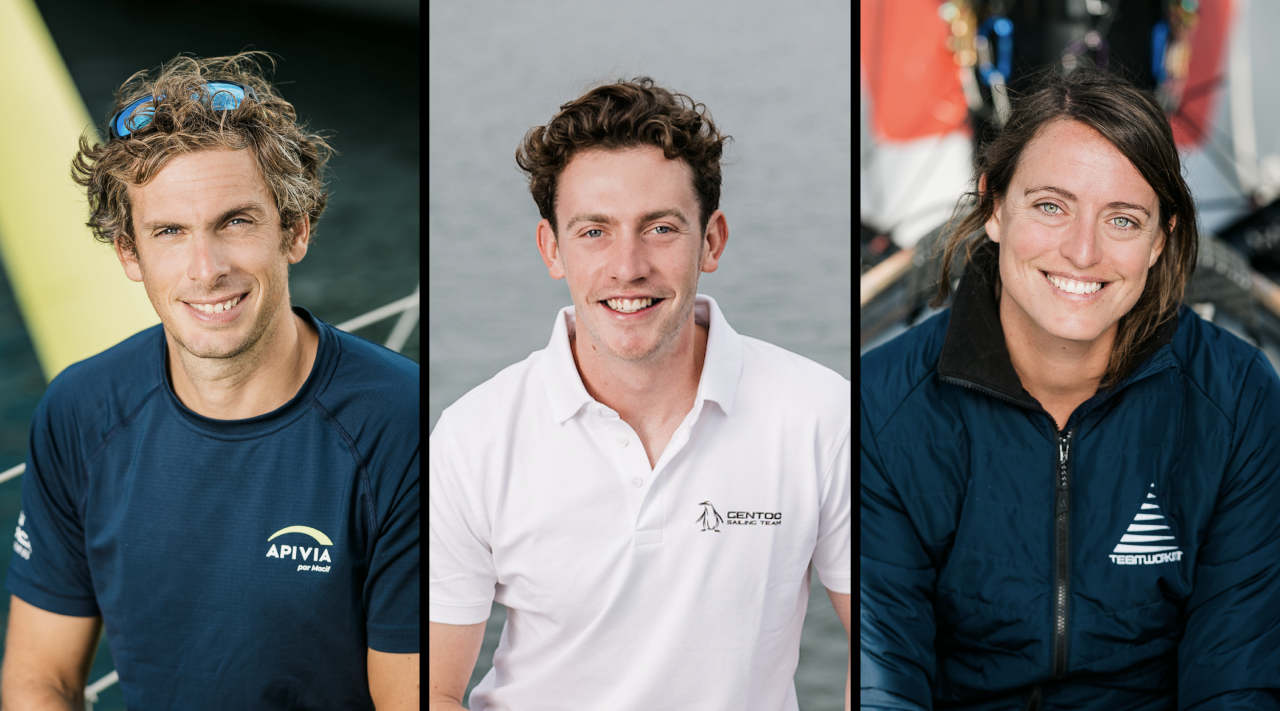
It is hard to believe that Charlie Dalin has never raced in the Route du Rhum-Destination Guadeloupe, but it is true. The skipper who has completely dominated the IMOCA Class in recent races, will be setting sail on the St Malo-to-Pointe-à-Pitre classic on November 6th for the first time.
But Dalin probably knows as much about the 3,500-nautical mile race as many who have sailed it multiple times. He first worked on it for the British Class 40 sailor Nick Bubb back in 2010, and was then part of Armel Le Cléac’h’s team in 2014, before two roles with Yann Eliès’s campaigns in 2014 and 2018.
So the 38-year-old skipper of APIVIA, who leads the IMOCA Globe Series this year, knows the course pretty much inside out. And Dalin has some interesting thoughts on how to win it, something he would dearly love to do following his victories this year in the Guyader Bermudes 1000, the Vendée Arctique and the Défi Azimut 48 Hours.
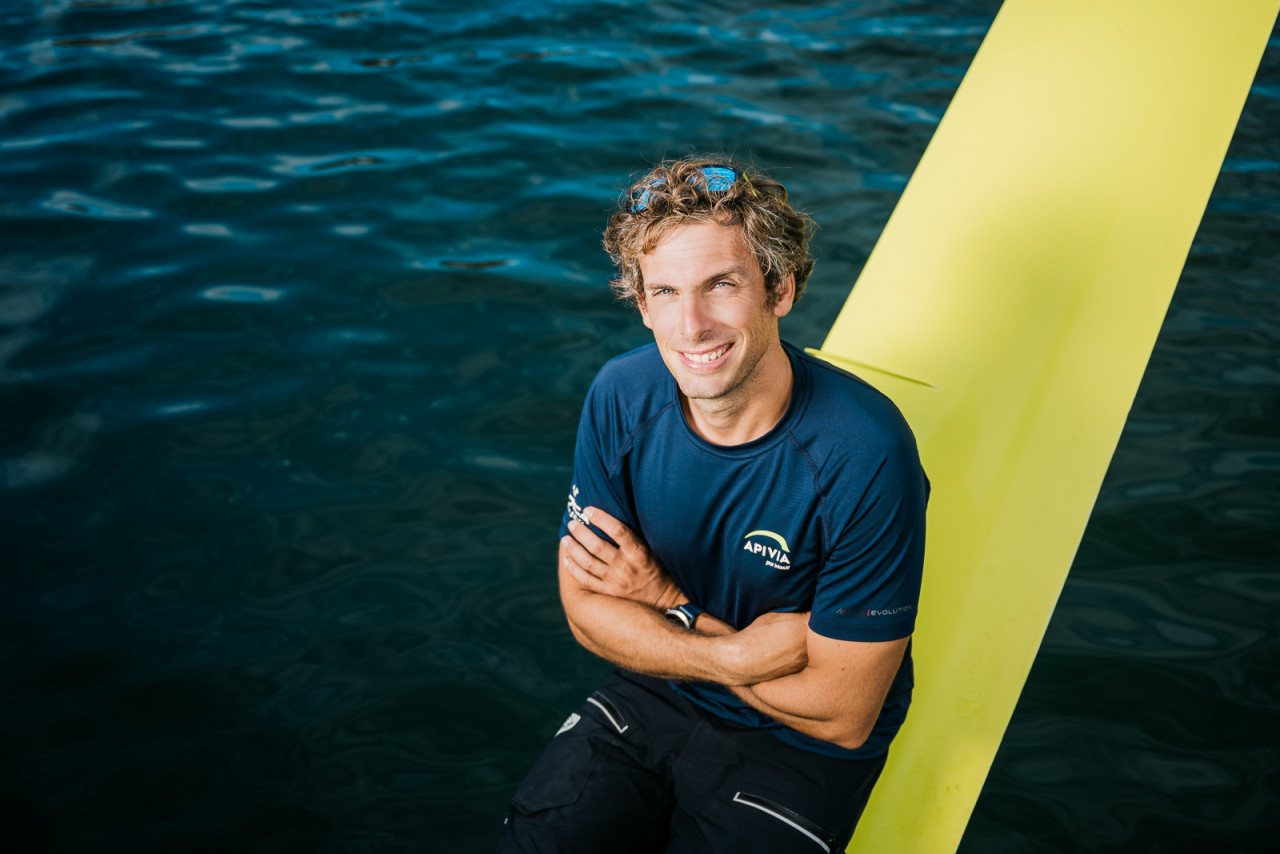 © Jean-Louis Carli / IMOCA
© Jean-Louis Carli / IMOCA
The first issue he believes is knowing how to deal with the pre-start frenzy in St Malo and then getting away with your head in the right place to sail well. “I know the race and what goes on – like the atmosphere in St Malo before the start, the crowds and the media,”he said. “There is so much going on – sponsors, press, family, team – everything. That’s the tricky part of the Route du Rhum.”
The next thing is being ready to sail at high intensity in the first few days and having your race plan mapped out before you set sail. “From the moment you find yourself alone on the boat, your battle plan has to be clear,” explained Dalin, who is one of the best in the Class at settling in and moving up through the gears from the start of any race. “You need to find the time to work on the weather before the start,”he said. “And then you have to sail at a pretty high pace – if you look at the history of previous winners, you always find they had been pushing hard in the early stages – in any category.”
The location of the start is also important because the big decisions come even earlier than in the Transat Jacques Vabre (TJV), for example, which sets sail from Le Havre. “We are starting further west in the Channel than the TJV, so on the first evening you potentially have to make a crucial decision that can have a big bearing on whether you win or lose the race,”said Dalin.
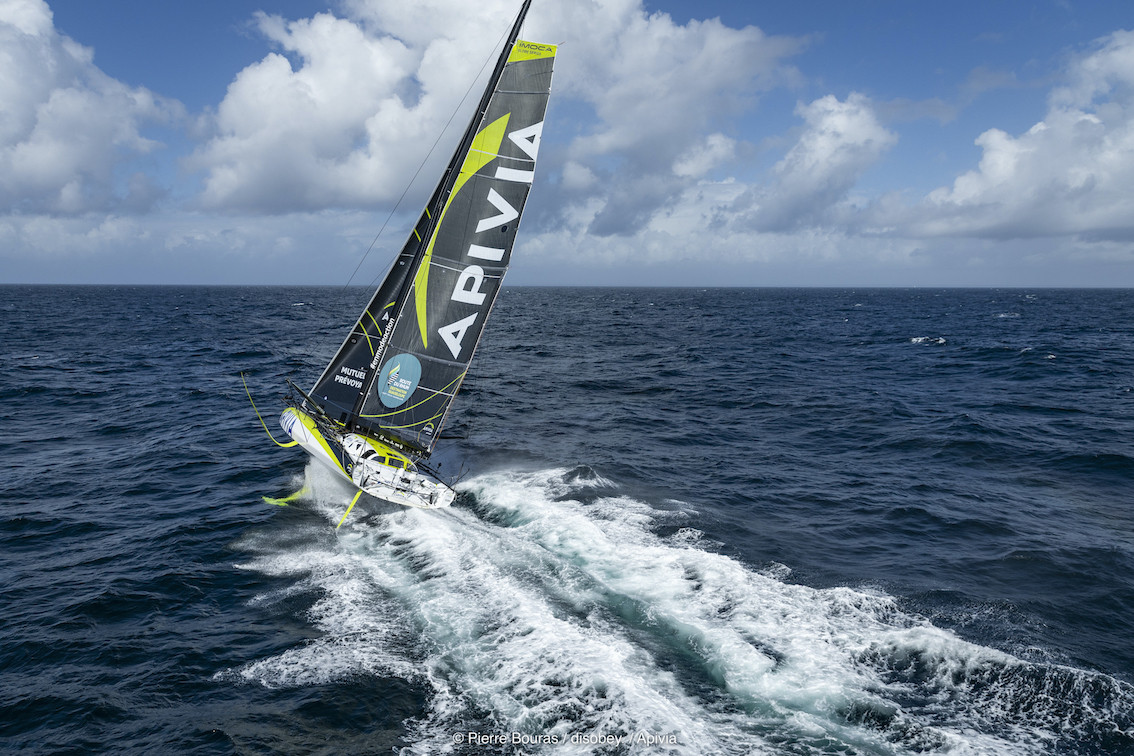 © Pierre Bouras
© Pierre Bouras
The APIVIA skipper also makes a fascinating observation about the final stages of the race, when the course takes the boats around the west coast of Guadeloupe before coming back up to the finish. It was during this phase of the contest in 2018 that the race-leading British sailor, Alex Thomson, ended up crashing onto the rocks when he slept through his alarm.
Dalin points out that this challenging finishing section is a big part of the overall effort. “Sometimes it can be pretty long, up to 20 hours,” he said. “So you are looking at almost 10% of your race time rounding Guadeloupe – once you see Guadeloupe, it doesn’t mean you are finished.”
For Dalin this will be his last race on the boat he now calls APVIA 1, with a new Guillaume Verdier design, project-managed by CDK and MerConcept, soon to take its place. This boat has brought him immense success, including line honours in the Vendée Globe and an almost perfect performance in the 2021 Rolex Fastnet Race.
Will it be an emotional moment when he says goodbye to an IMOCA that will now be handed on to the French skipper Clarisse Crémer? “I really don’t know how I am going to react when I step off the boat in Guadeloupe,”he said. “But I am happy to get my new boat because the aim was to keep the strong points of APIVIA 1 and get rid of the little things we thought we could improve. So I am trading it for something better.”
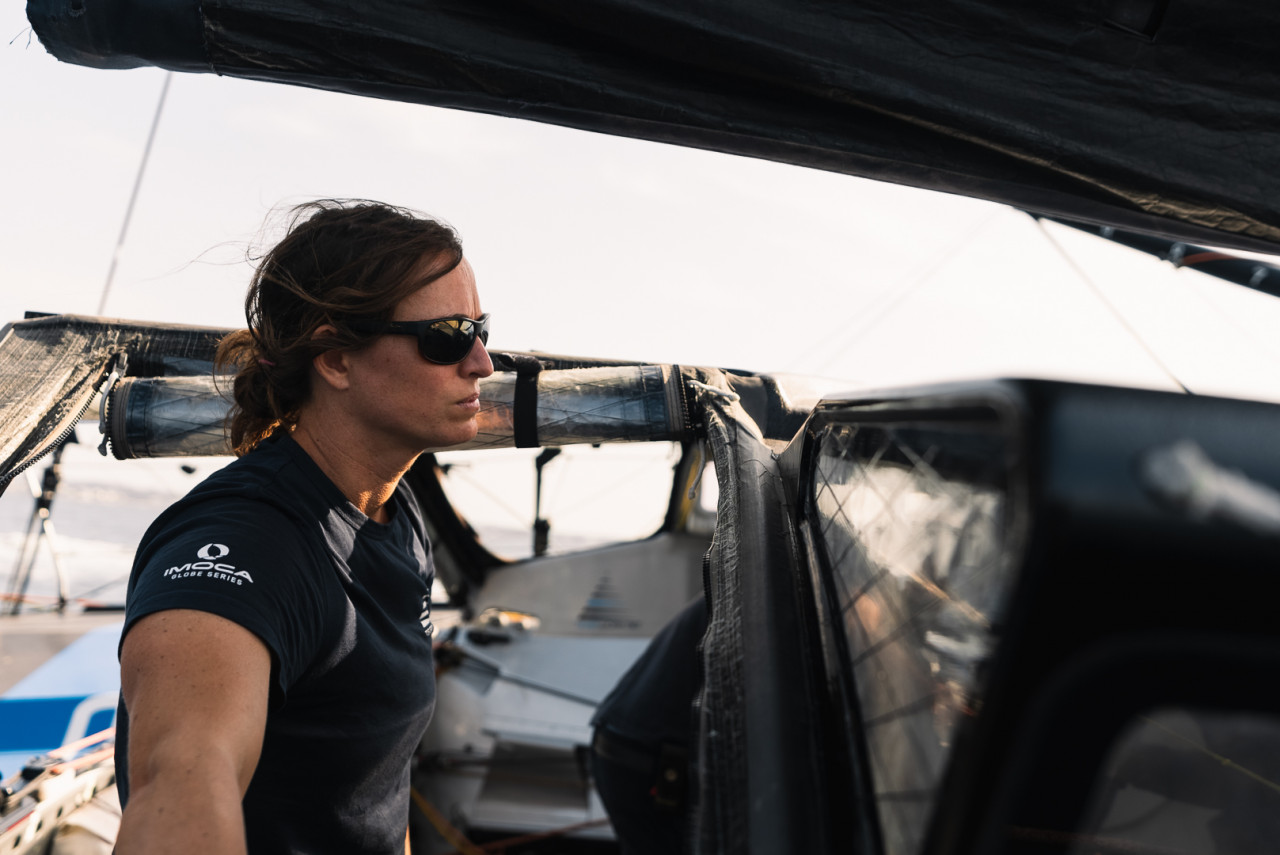
Our second featured rookie in the record-setting 36-strong IMOCA fleet is one of four female skippers in the field, the Swiss sailor Justine Mettraux. This will be her second race on Teamwork – the former Charal 1 – and an important milestone as she begins her build-up to the 2024 Vendée Globe.
Mettraux finished sixth in the Défi Azimut 48 Hours on debut on Jérémie Beyou’s old flying machine and she is looking forward to getting going on her first solo Transat in the IMOCA class.
“I feel quite happy with the boat, but I know there are some situations – some wind strengths and angles – that I haven’t yet had experience of, so there will be, for sure, some more things to find out and more things to experiment with. I will keep learning during the race,” she said.
Mettraux, 36 who grew up sailing on Lake Geneva, is focusing intently on the early stages when she is expecting a rough start in the north Atlantic. “Leaving Brittany in November is never nice,” she said. “I think the plan is to do the best I can in the early stages – we know that if you manage to be ahead in this section, things will only get better for you. So it will be about trying to push in the first week and finding a good rhythm and being careful not to break anything, so that is always a compromise I guess.”
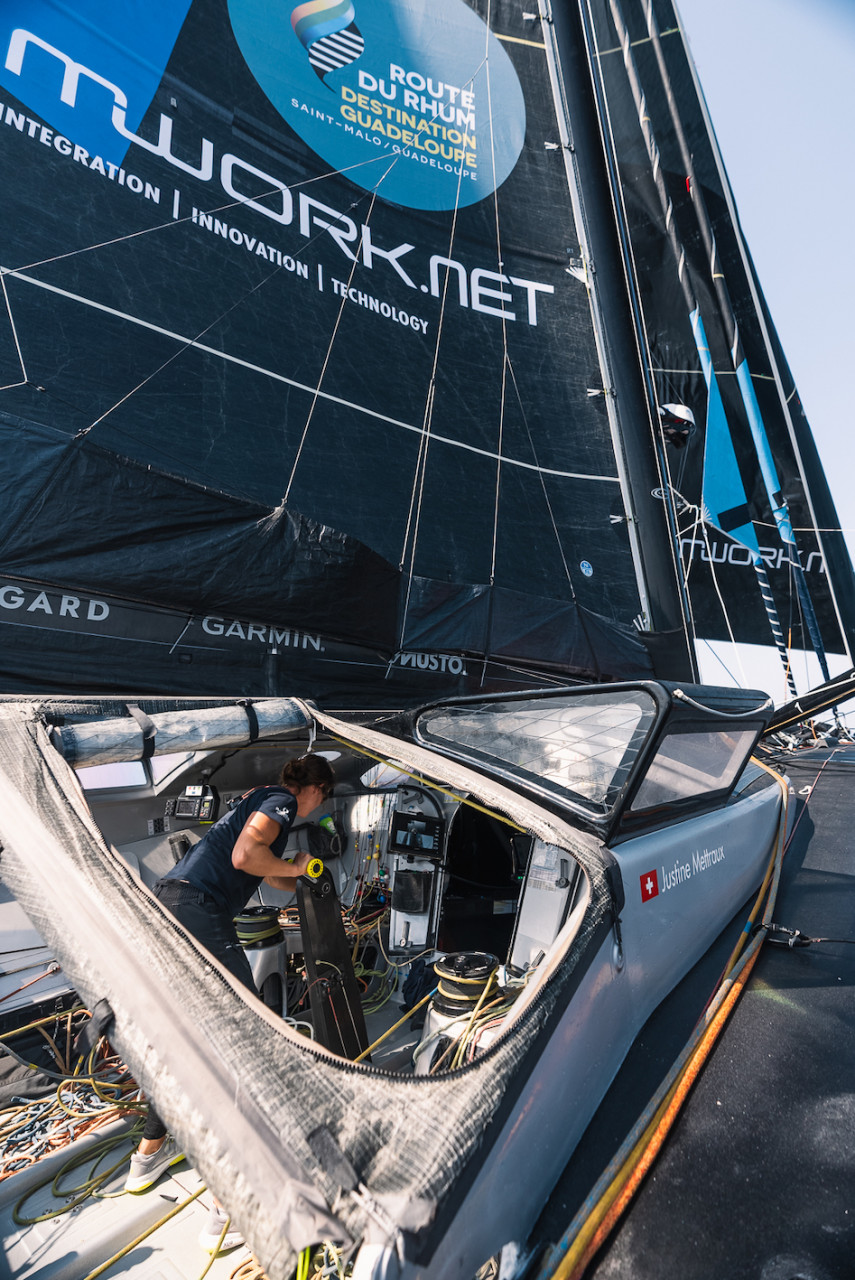
For Mettraux it is especially important to complete this race because next year she will be heavily involved in The Ocean Race as part of the crew on 11th Hour Racing Team Mālama, so she will not have time for much solo sailing. “I hope I finish the Route du Rhum,” she summarised. “My goal is to finish and to get know my boat better and be happy with the way I sail it.”
Back home in Switzerland she said interest is beginning to build in her campaign, as she sets out to become the first Swiss woman to complete the Vendée Globe, with the Route du Rhum the most high profile element yet of what is a pioneering campaign. “For us it is the start of our project and maybe there will be more visibility with the Route du Rhum,” she explained. “But yeah, I hope there will be a bit more interest. Maybe there is from the sailing community – I think people are happy to see finally a female sailing project for the Vendée Globe. But I still feel the need to push open the doors because it has never been done before,” she added.
Our third Route du Rhum rookie – there are no less than 13 in the IMOCA fleet assembling in St Malo – is the young (just 24 years of age) Englishman, James Harayda, at the helm of Gentoo Sailing Team, originally the 2007 Finot-Conq Hugo Boss.
For Harayda, this really is a step into the unknown, having never attempted a Transatlantic race before, let alone a solo one on a powerful IMOCA racing machine. He says he will be pacing himself against his close friend Ollie Heer, on Oliver Heer Ocean Racing, and he picked out Tanguy Le Turquais on Lazare, as a “great boat to be next to.” But his goal is on trying to finish more than race position.
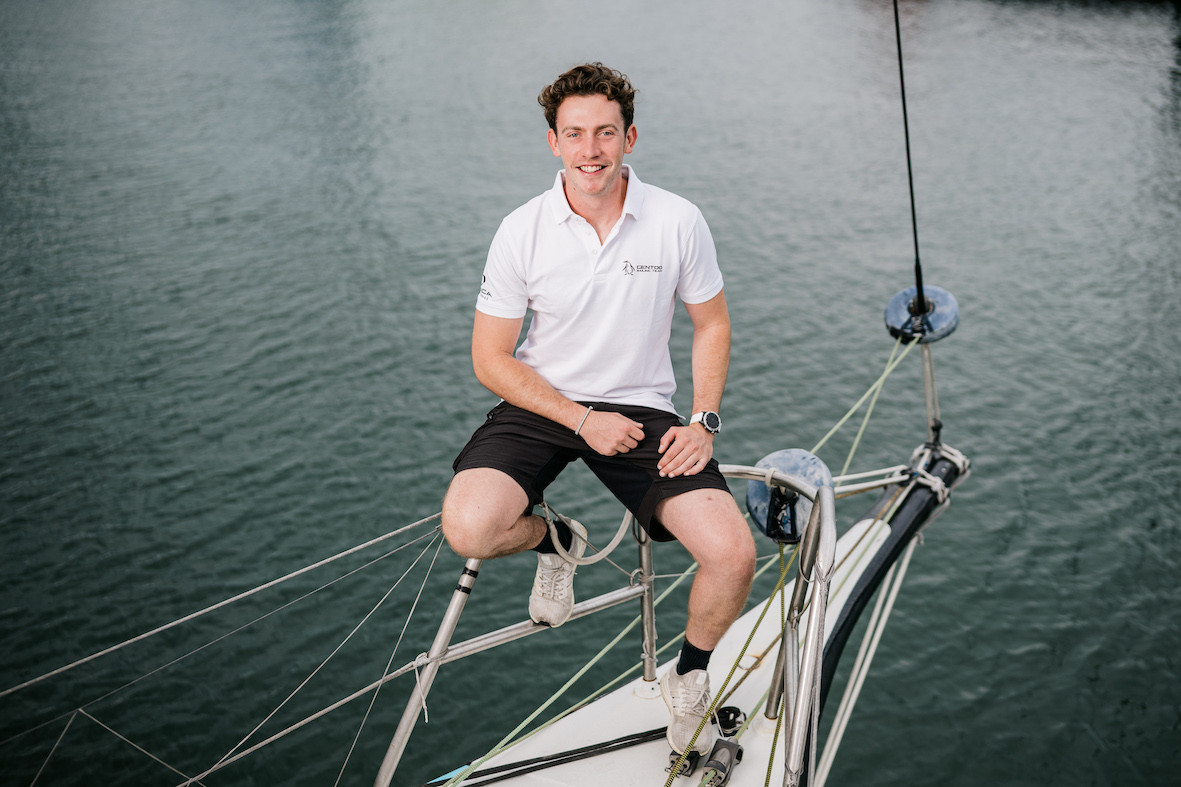 © Jean-Louis Carli
© Jean-Louis Carli
“Our focus, as a team, is on what we need to do to make sure we cross the finish line,” said Harayda. “Results are fantastic but they come second right now. Obviously when we move into the Vendée year, then the focus can shift a little bit, especially when we have raised a little more money.”
This ambitious young man wants to complete the 2024 Vendée Globe and then come back in 2028 with a new boat at the head of a competitive campaign. But for now, his only point of comparison for the Route du Rhum is the Défi 48 Hours which he finished in 19th place.
“The Route du Rhum is just a completely different beast and I think the whole preparation is very different from a 48-hour race, so the amount of effort and work that is going to have to go in before the start is massive,”he said, speaking from on board as he delivered his boat to St Malo.
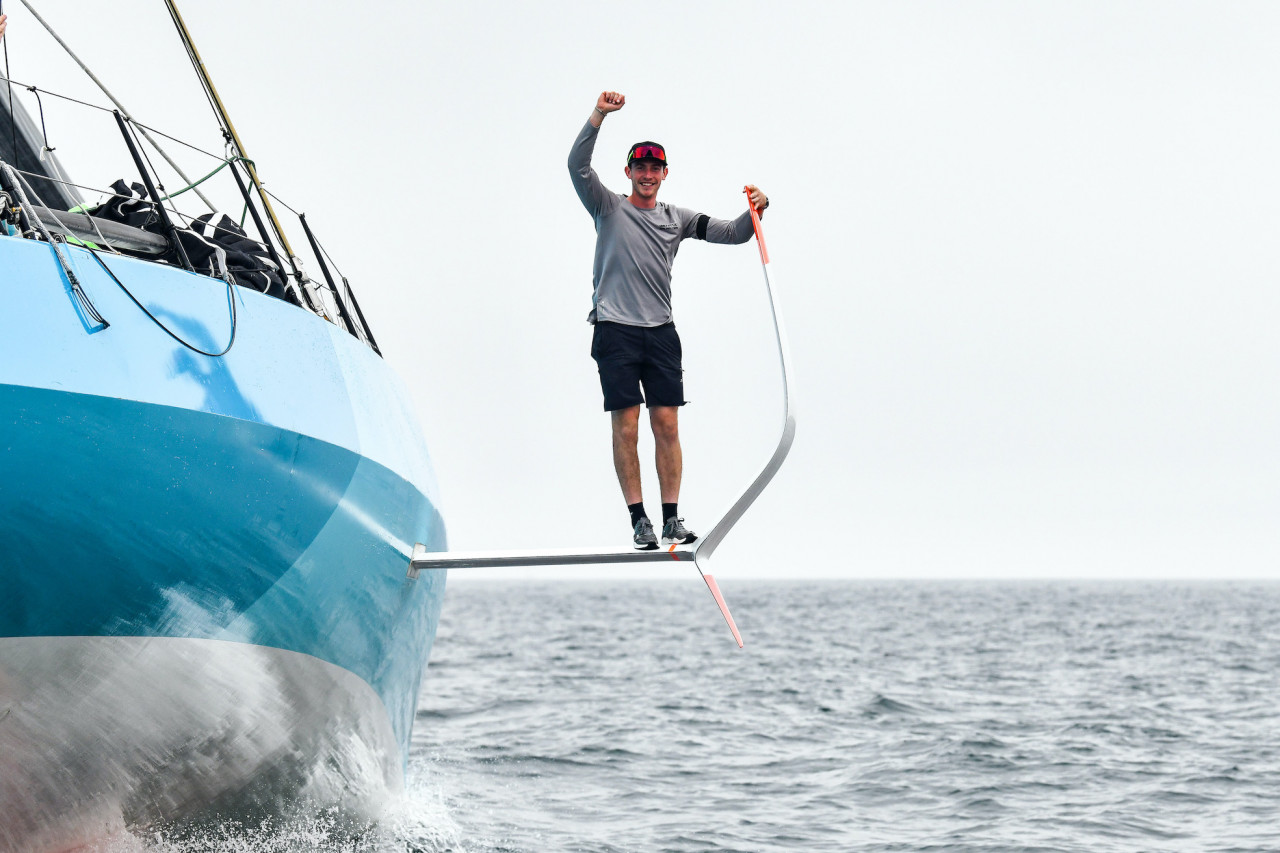 © James Tomlinson / Gentoo
© James Tomlinson / Gentoo
“We are also, as a team, looking at the Route du Rhum as a very different event to the Défi Azimut,”he continued. “That was an important race – it was obviously our first one. But you can get by with a lot in a 48-hour race, whereas with a Transat, and one that is very valuable as a Vendée Globe qualifier, we just need to get the boat across the finish line and get those miles in.”
Harayda, who has raced double-handed with the British record-breaking round-the-world sailor Dee Caffari, says he hopes to get through the first week and then be in a good position for the rest of the race. “That first week is critical,”he said. “Once you get into the trade winds, you obviously want to be positioned in a good place because after that it is not always, but a lot of the time, a drag race. I am quite comfortable with the speed, particularly downwind, that we have with the boat.”
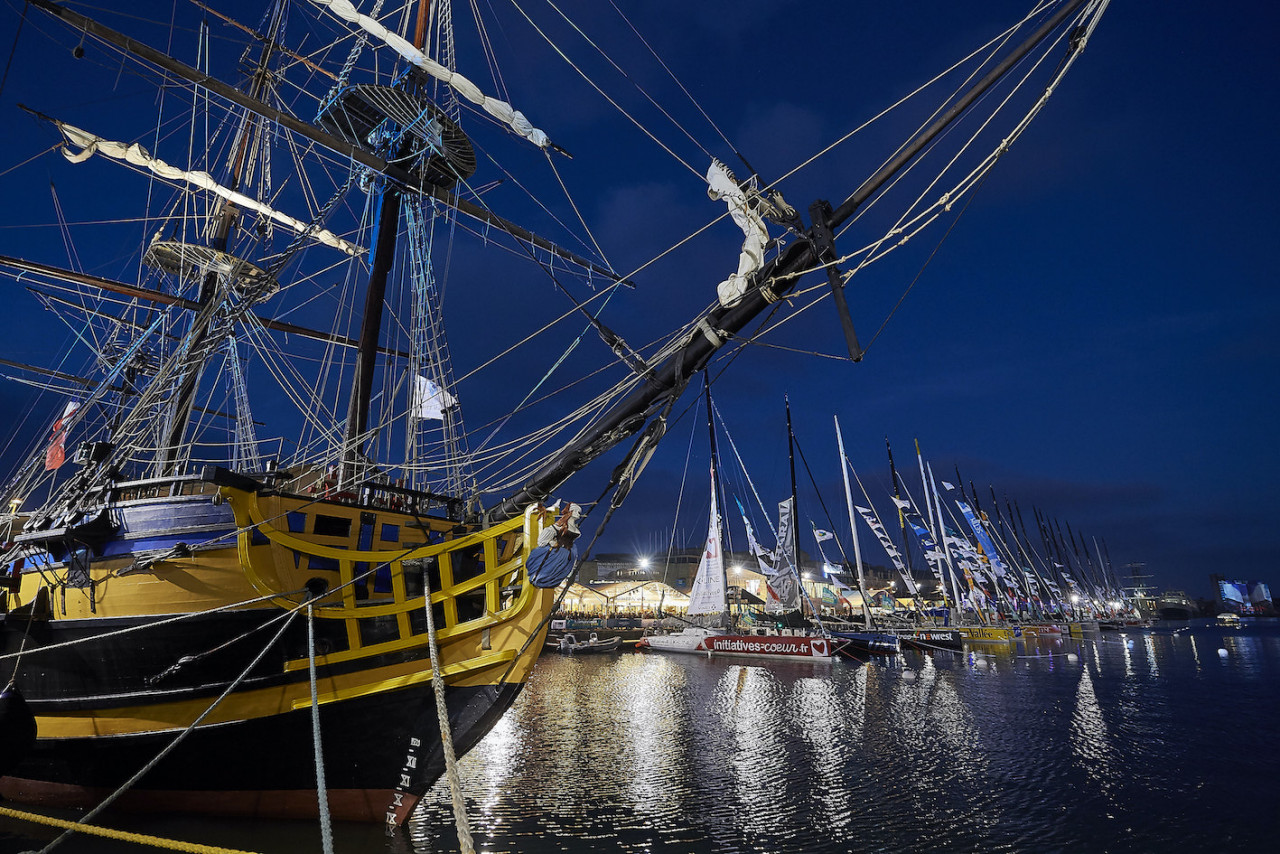 © YVAN ZEDDA
© YVAN ZEDDA
Ed Gorman
Teams info
After a stunning 2025 season Sam Goodchild is the IMOCA Globe Series Champion for the second time
After a long season at the top of the IMOCA fleet that featured three race wins, Great Britain’s Sam Goodchild is for the second time in three years the IMOCA Globe Series Champion.
•••Quel rôle peut jouer la course au large dans la transformation du transport international ? Avec Pie…
Pour ce 10ᵉ épisode de Transitions, enregistré au Havre lors du départ de la Transat Café L'Or, nous recevons Jeremy Pochman, PDG de 11th Hour Racing, et Pierre-Antoine Morvan, responsable du pôle course au large et supe…
•••